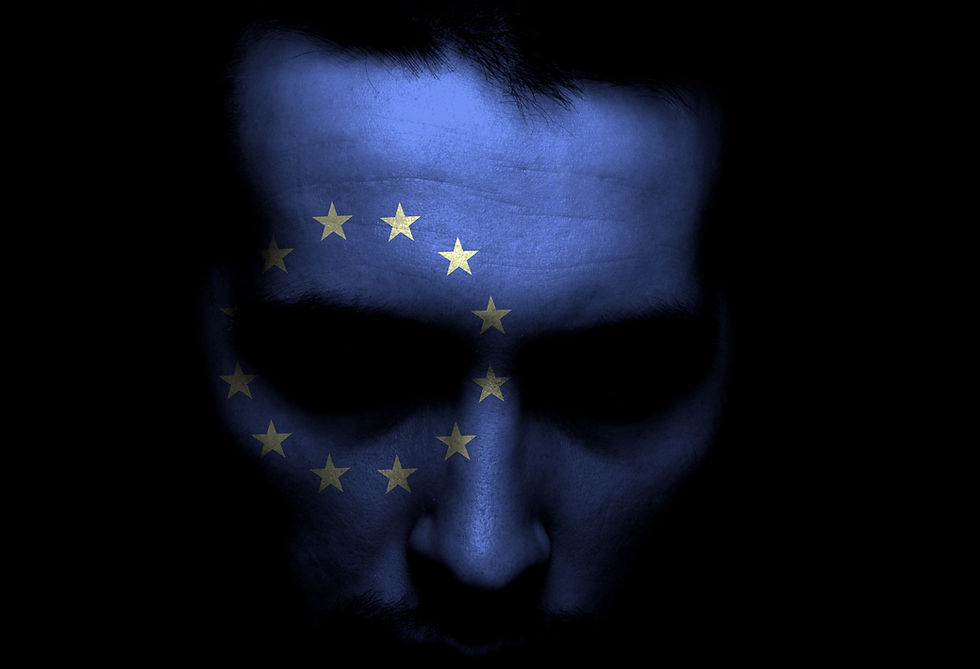WHOSE MUSIC IS IT ANYWAY? (Part 1/5) How the Internet has changed business models.
- Dominic McGonigal - C8 Associates
- Mar 14, 2016
- 4 min read

Source: Dissecting the Digital Dollar, MMF/CMU, 2015
In 1993, I received a phone call from Darren Henley. Yes, the Darren Henley who is now the Chief Executive of the Arts Council. Back then, he was doing the news for Classic FM. He asked me whether I had heard about the internet – it had only been invented three years earlier by Tim Berners-Lee – and whether I would do an interview. He wanted me to tell the radio listeners about the internet and what it means for musicians.
I described it as a ‘giant billboard in the sky and a virtual jukebox.’
Twenty five years later, the internet is dominated by advertising and interactive streaming.
And the business model for music has been turned upside down.
In the pre-Internet days, right up until the millennium, the music business was about selling records. Bands toured to sell records. They made videos to sell records and they went on the radio to sell records. The record company had one deal with a distributor and almost all their revenue came from four or five retailers. It was a linear value chain, with a margin for the retailer, a margin for the distributor, a royalty for the artist and a royalty for the writer. The record company was at the centre of the business model. But that all changed with the Internet, although it wasn’t until about ten years after Tim Berners-Lee invented html that the music industry really began to feel the effects. In 2001, Apple introduced the first iPod. iTunes launched in the U.S. in 2003, followed a year later with the launch in Europe. Within three months of the UK launch, there were over 2m legal downloads, enough to create a download chart, announced by BBC Radio 1 in September 2004. YouTube followed in 2005 and Spotify in 2008. Consumers turned their back on CDs and online consumption rocketed.
Let’s take a closer look at these new business models.
iTunes offers downloads for $0.99. In round terms, 70% of that goes to the record company and about 8% goes to publisher and songwriter. This is very similar to the old sales business model, except that the songwriter royalty comes directly from iTunes, not the record company.
Spotify offers a basic $9.99 monthly subscription or an ad-funded service, which is free. The total revenue from subscriptions and adverts is then combined to determine the royalties for the music – about 65% goes to record companies and 8% to publishers. That’s known as a ‘Freemium’ model, a free element with a limited offering, encouraging consumers to opt for the subscription with the full premium service. Spotify now has a total user base of just under 100m, of whom around 28m are paying subscribers, which is the lion’s share of Spotify’s revenues. Although there is still a link between a play and the payment by a consumer, that link is not direct as the royalty payment will depend on the number of other songs that are played, as well as the total number of subscribers.
YouTube is free to the consumer. The revenue comes from advertising on the platform, as well as from the user data. There is no direct link between a play on YouTube and a payment by an advertiser. In theory, the deal is that 50% of any advertising revenue linked to a video is shared with the right holder. I say in theory because there are quite a lot of caveats to that and record companies and artists have no way of knowing whether the accounting is correct. More significantly, YouTube allowed anyone to upload any content. Rightholders were then offered a choice of accepting that licence deal or going through the takedown process (currently YouTube receives over 15m takedown requests every week). It is effectively a ‘post first, license later’ model. The outcome is a new business model.

Source: Dissecting the Digital Dollar, MMF/CMU, 2015
Instead of the record company being at the centre we have the licensee, such as Spotify, YouTube or iTunes at the top. They get the licence from the record company, which includes the artist, and the licence from the publisher, which includes the songwriter. The business model is now based on a licence for a whole catalogue, rather than a transactional deal for the sale of an album.
While this licence model undoubtedly impacts the music industry, it is the ‘post first, license later’ model, favoured by some service providers, which has had the most profound effect. It is effectively a reversal of copyright principles.
From the Statute of Queen Anne in 1710 to now, copyright law is based on the simple idea, ‘I write the music, it’s mine.’ In law, that gives me the right to say ‘Yes’ or ‘No’ to anybody. I can decide about making copies, making it available, distributing it, selling it – anything. But on the internet, I no longer have the right to say ‘Yes’ or ‘No’. It’s already out there.
Post first, license later.
The blog mini series Whose Music Is It, Anyway? is based on a guest lecture given by Dominic McGonigal at Trinity College, Dublin in February 2016.
Dominic McGonigal is Chairman of C8 Associates, a consultancy dedicated to taking creative businesses to the next level. He also chairs two creative startups, CICI and JazzUK. Read more at www.c8associates.com Part 1 is available here. The next part will be published tomorrow.
If you would like to be invited to the next C8 Networking Drinks, please click here.





Comments